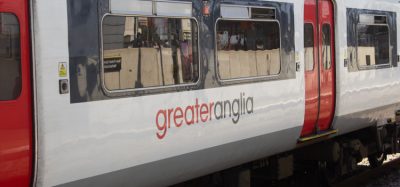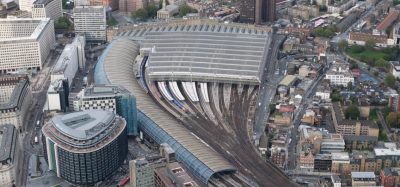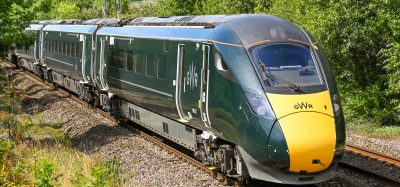Transforming Lübeck
Posted: 3 April 2007 | | No comments yet
Stations are the gateways to rail systems and they often act as the centrepiece of a city or a region. Their visual appearance and the services they provide are essential to customer satisfaction and have a major influence on the attractiveness of rail.
Stations are the gateways to rail systems and they often act as the centrepiece of a city or a region. Their visual appearance and the services they provide are essential to customer satisfaction and have a major influence on the attractiveness of rail.
Stations are the gateways to rail systems and they often act as the centrepiece of a city or a region. Their visual appearance and the services they provide are essential to customer satisfaction and have a major influence on the attractiveness of rail.
Stations are a key link in the travel chain and are increasingly developing into meeting points that offer a wide range of shopping and catering facilities, plus a choice of services designed to meet the needs of today’s traveller. From station parking and wireless Internet access to special services for holders of First Class tickets for DB’s long-distance services, customer comfort and convenience are available along the entire travel chain. Stations also play a key role in successful urban development, and German railway stations have come a long way since the beginning of the rail reform. Numerous stations have been rebuilt and modernised. The ‘Renaissance of Railway Stations’ which was presented at the Venice Architectural Biennial in 1996, signalled the start of the revitalisation of attractive travel and service centres. Over the last few years, several construction projects have been successfully completed in northern Germany – such as the central stations in Hanover, Kiel, Rostock and Oldenburg.
The Lübeck Central Station
In northern Germany, Lübeck Central Station is the last major station revitalisation project to be completed within the framework of the station development programme that began in the mid-nineties. The station lacked the requirements of a modern, customer-friendly and barrier-free station and had to be brought in line with today’s standards in order to meet the demands of approximately 320 trains and 31,000 visitors a day. At a cost of roughly €45 million, it is now being transformed into an ultra-modern passenger station. The station had originally been built in 1908, based on a design submitted by Professor Fritz Klingholz of Lübeck-Büchener-Eisenbahn (LBE), to replace the station erected in 1851 near the Holstentor Gate, and became an important stopping point on the ‘Vogelfluglinie’ (flying bird line) that ran from Hamburg to Scandinavia from the 1960s. But it is not only the Lübeck Central Station that is getting fit for the future – the railway infrastructure in the district around Lübeck is also subject to an extensive modernisation programme.
With the reunification of the two German states in 1990, Lübeck moved from the border regions into the very heart of Europe. The railway infrastructure, which had been reduced to a small number of border crossing points, particularly after the Wall had gone up in 1962, had to be rebuilt. Reunified Germany still had to be unified again in terms of its railway infrastructure. Just a few days after the Wall came down, preparations began for a modernisation programme, the likes of which had never been seen before in the history of Germany railways. As early as November 1989, railway employees in eastern and western Germany got down to reactivating and upgrading the key rail links between the two parts of Germany. On 28 June 1990, in a statement on the state of the transport union, the two German ministers of transport presented a programme of nine projects to bridge the existing gaps and, in April 1991, the German government approved the programme of German Unification Transport Projects. A total of 17 ‘German Unification Transport Projects’ covered the upgrading and construction of approximately 2,000 kilometres of track. ‘German Unification Transport Project No. 1’ included the upgrading of the lines from Lübeck and Hagenow Land via Bad Kleinen and Rostock to Stralsund, to link up Mecklenburg-Vorpommern with the European rail network. The cost for upgrading the 242-kilometre line was in the region of €800 million.
Electrification of the Hamburg-Lübeck-Travemünde line has also been planned in order to cope with the continuing growth in traffic volume. The aim is to increase line capacity, reduce travel times, relieve road traffic and increase competitiveness. The project is divided up into six planning permission sections. Approval has been granted for three sections. Electrification is scheduled for completion in time for the timetable changeover in 2008, with double-track upgrade following in time for the changeover in 2009. Improvements that have been planned include doubling the single-track sections on the Schwartau-Waldhalle – Lübeck-Kücknitz line, the construction of a new converter station in Lübeck-Genin and the electrification of the Hamburg-Lübeck-Travemünde line, including the link to the Hamburg freight bypass line and electrification of some sections of the Lübeck docks rail network. As part of the electrification project, extensive work is also to be completed to provide the necessary gauge clearance, thus ensuring that sufficient space is available for the catenary. For this purpose, four new road bridges will have to be built. In other places, tracks under bridges will have to be lowered to make up for the limited height of the bridge structures. Electrification will not only provide the line between greater Lübeck and Hamburg with a much improved link to Germany’s electrified rail network and beyond. Freight transport in the Baltic region will also benefit. In addition to the catenary work required for the electrification project, modifications to the signalling and telecommunications systems also have to be completed. As a result of the poor subsoil conditions in the Schwartau and Trave River basin districts, pile foundations will have to be constructed in two areas to stabilise the track superstructure for a total length of 1.6 kilometres. Grouting is also required for a length of 300 metres to stabilise the subsoil.
In addition to Lübeck Central Station, the railway station at the famous Lübeck-Travemünde seaside resort has been renewed at a cost of approximately €2.3 million. The station, which was re-opened in May 2006, is now spacious enough for the new Welcome Centre of Lübeck und Travemünde Tourist-Service GmbH. A complete facelift of the foyer at Travemünde Beach Station will transform it into a modern, customer-friendly station. The station has a history dating back almost 100 years and the project will also include the refurbishment of the platform roof – part of which has been designated as a protected building. The successful synthesis of historical building and modern facilities has given the beach station a new lease of life and created a delightful showcase of Travemünde. In the foyer, some of the brickwork has been removed from the semi-timbered walls and replaced by large areas of glass. The entire floor of the reception hall has been renewed, while retaining the original pattern, to provide the perfect finishing touch. In close cooperation with the monument conservation authorities, the commercial units have also been redesigned to provide a pleasant overall effect. On an area of approximately 240 square metres, new commercial units have been created and new toilet facilities provided. The new sales concept is designed to provide the customer with a new quality of service. The focal point of the station foyer is the new Welcome Centre of Lübeck und Travemünde Tourist-Service GmbH, covering an area of approximately 200 square metres. It provides a first-class tourist service for visitors to the Baltic Sea health resort. The overall concept, in addition to offering personal advice and booking services, also includes a service area with two Internet workstations and a lounge in which visitors can study the offers and brochures available. An information terminal has also been provided outside the Welcome Centre, which provides round-the-clock access to the information and reservation system operated by Lübeck und Travemünde Tourist-Service GmbH, including important information on Travemünde and the possibility of booking a hotel, at any time of the day or night. The historically protected roof covering the main platform area and the concourse roof have been refurbished. The platforms have been renewed and provided with seating, information display cabinets and litter bins. The lighting and the wayfinding system are also new, and the historical train departure indicator in the tower of the station foyer is in operation again. Each day, approximately 1,600 travellers and visitors use Lübeck-Travemünde Beach Station, which was built in 1912, with approximately 30 trains departing from and terminating at Travemünde daily.
Lübeck Central Station is thus in the middle of some extensive restructuring work being completed by Deutsche Bahn in northern Germany. The client for the station and for all the other construction work carried out on the stations is DB Station&Service AG, which is responsible for the operation of some 5,400 railway stations in Germany. Project management for the modernisation work is handled by DB Projektbau GmbH, which co-ordinates and controls many of the construction projects implemented by Deutsche Bahn AG. The complete renewal of Lübeck Central Station, the planning for which began in 2001, is broken down into three areas:
- The passenger bridge and the associated structure
- The platform hall
- The platforms themselves
The passenger bridge, which is 100 metres in length and spans all the platforms, is to be completely rebuilt and, due to the planned electrification of the Hamburg-Lübeck-Travemünde line, will be raised by approximately 60cm. New commercial units on the bridge are also planned. The 21-metre wide bridge is split into a walkway 10 metres for the sales and service area. Access to the platforms are by the historical staircases. Additional stairwells and wheelchair-friendly lifts that can carry up to 26 persons have also been added.
The entire platform hall, with a length of 130 metres and a width of 85 metres, will be completely dismantled and rebuilt in its historical form using elements approved by the German monument conservation authorities. The roof covering the four halls has a total area of approximately 12,000m2, and over 2,200 tons of steel will be used for the construction of the platform hall.
The four so-called central platforms will be renewed over their entire length of 320 metres each with an access height of 76cm. New seating, a new wayfinding system and a passenger information system round off the entire project. In the process, over 12,000m2 of new platform surface covering will be laid.
The rebuilding of the central station will be completed in 17 construction phases extending from May 2003 until July 2007. In phases 1 to 6a, a temporary arrangement was set up to take passengers across the luggage bridge; the station concourse, the passenger bridge and the track superstructures were removed. The reusable parts of the station concourse and the passenger bridge were stored temporarily in Lübeck Schlutup. In phases 6b to 17, the platforms were removed and then rebuilt, and the platform hall along with its foundations and the façade renewed. In February 2005, work on the construction of the new platform hall, passenger bridge and platforms began. The complete renewal of the central station was conducted, as is usual for Deutsche Bahn, with no interruptions to normal train services, since it is simply not possible to close down a railway station completely during an extended reconstruction stage. The civil engineering concept guaranteed that any 3 of the 4 platforms remained in service even during the reconstruction phase and that train services were organised to ensure that travellers experienced no timetable restrictions. Train stops that varied from one construction phase to the other were a particular challenge in terms of the information provided by the station staff, who handled the situation in an excellent manner. To provide access to the platforms and passenger information while construction was going on, the old luggage bridge was modified and equipped accordingly. The platforms were successively opened to passengers between May 2005 and July 2006. The opening of the platform hall and passenger bridge will take place in summer 2007.
About the author
Matthias Hudaff is responsible for large-scale infrastructure projects in the Hamburg metropolitan region and in Schleswig-Holstein. After completing his studies in civil engineering at the University of Hanover (TU), he was employed with Hamburger Verkehrsverbund, the Hamburg transport association, from 1992 to 1996 in transport planning and optimisation activities for Hamburg’s local transport system. From 1996 to 1998, he was involved in the completion of projects for Hamburg-Consult, including the transport strategy for the city of Bratislava, the integrated bus and rail network in Saarbrücken and the overall transport concept for the Hanseatic city of Rostock. He was head of the technical centre of the North branch of DB Station&Service AG from 1998 to 2000. And from 2000 to 2006, he was Project Manager for Rostock Central Station (€77 million), Kiel Central Station (€30 million), Lübeck Central Station (€45 million) and the S-Bahn link to Hamburg airport (€280 million).
Global Railway Review Autumn/ Winter Issue 2025
Welcome to 2025’s Autumn/ Winter issue of Global Railway Review!
The dynamism of our sector has never been more apparent, driven by technological leaps, evolving societal demands, and an urgent global imperative for sustainable solutions.
>>> Read the issue in full now! <<<







